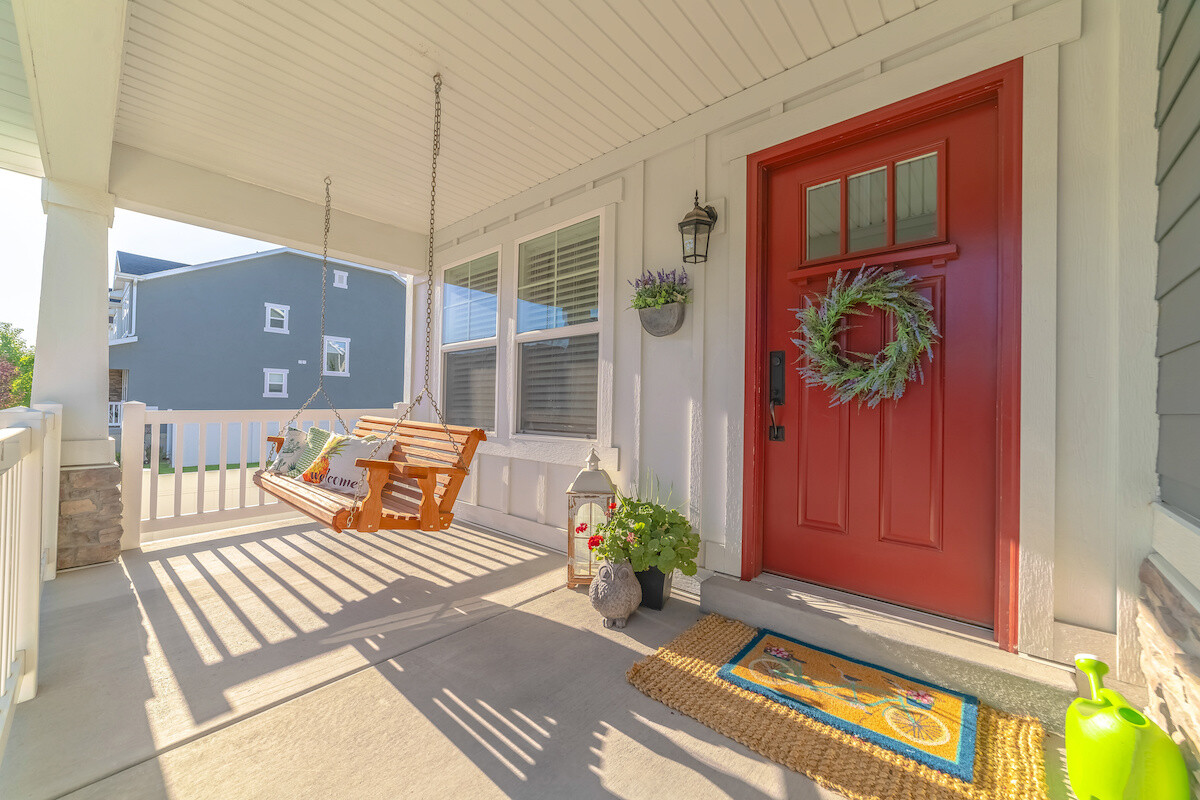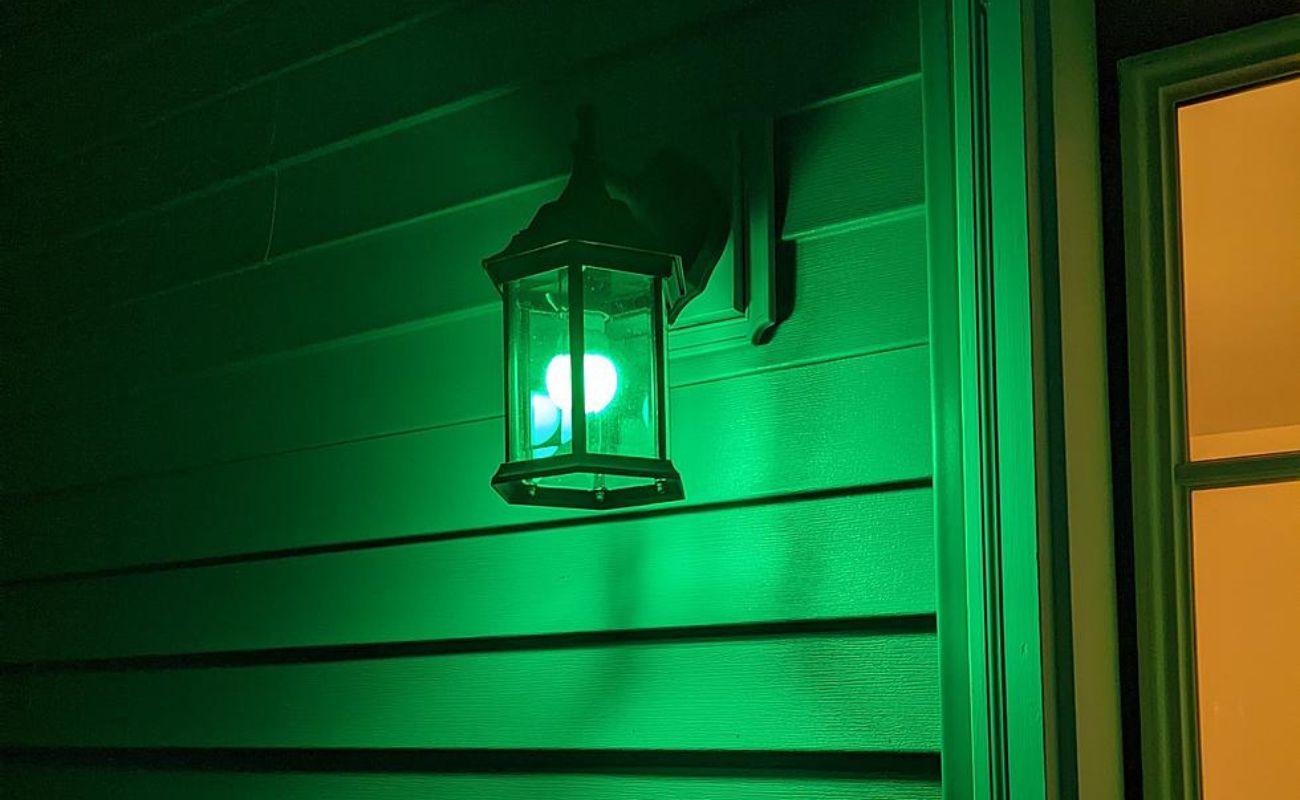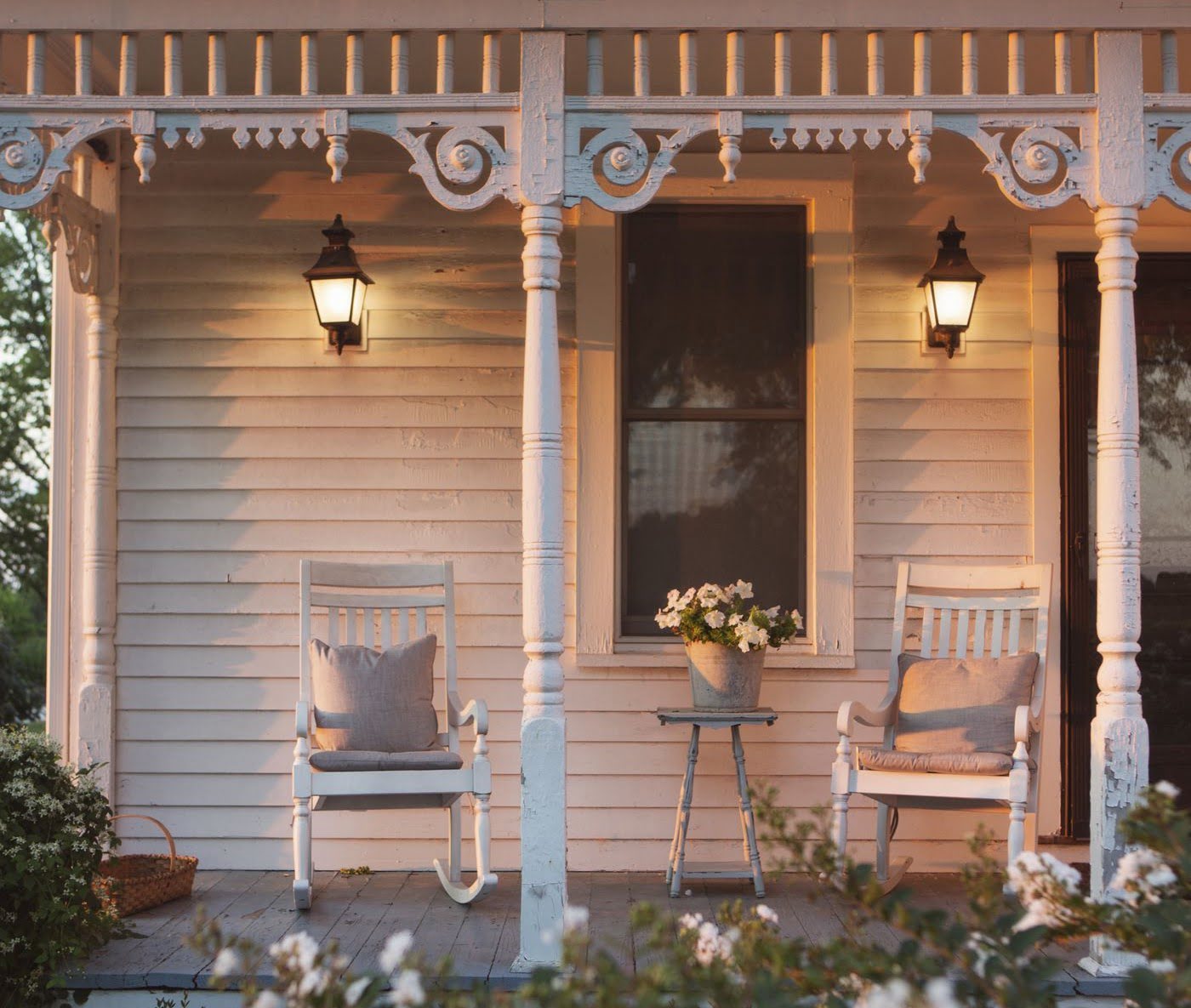

Articles
What Does Porch Mean
Modified: May 6, 2024
"Discover the meaning of porch and its various uses in our insightful articles. Explore the history, design ideas, and practical tips for creating a charming porch space."
(Many of the links in this article redirect to a specific reviewed product. Your purchase of these products through affiliate links helps to generate commission for Storables.com, at no extra cost. Learn more)
Introduction
Welcome to the wonderful world of porches! These versatile and charming architectural features have been a beloved part of homes for centuries. Whether you’re sipping lemonade on a warm summer day or rocking in a chair on a cool evening, porches offer the perfect space to relax, socialize, and enjoy the great outdoors without leaving the comfort of your home.
But what exactly is a porch? In simple terms, a porch is a covered area that extends from the entrance of a building, usually located at the front or back of a house. It serves as a transition space between the interior and exterior, providing a sheltered area for various activities and creating a welcoming ambiance.
However, porches come in different shapes, sizes, and styles, each with its own unique characteristics and purposes. From classic wrap-around porches to cozy screened-in retreats, there’s a porch design to suit every taste and architectural style.
In this article, we will explore the definition of a porch, delve into its various types and styles, and uncover the fascinating history behind these charming outdoor spaces. We’ll also discuss the purpose and function of porches, explore popular porch designs, and examine the elements of porch decor. So, grab a cup of coffee, find a comfortable spot, and let’s dive into the world of porches!
Key Takeaways:
- Porches are versatile outdoor spaces that bridge the gap between indoor comfort and outdoor enjoyment, offering a seamless connection to nature and providing a welcoming spot for relaxation and socializing.
- Porches have a rich history, cultural significance, and artistic inspiration, symbolizing community, nostalgia, and the simple joys of life. They enhance the overall aesthetics of a home and create a lasting impression.
Read more: What Does A Pineapple On The Porch Mean
Definition of Porch
A porch is an architectural feature that extends from the entrance of a building, providing a covered outdoor space. It is typically attached to the front, back, or side of a house, and functions as a transitional area between the interior and exterior. The structure of a porch often includes a roof and may have columns or posts supporting it.
Porches are designed to offer protection from the elements while allowing occupants to enjoy the outdoors. They can provide shade from the sun, shelter from rain, and a space to relax and socialize. Porches vary in size and can be small, just enough for a few chairs, or expansive, wrapping around the entire perimeter of a building.
One of the distinguishing features of a porch is its open and accessible nature. Unlike a fully enclosed room, a porch is more connected to the outside environment. This creates a seamless transition between indoor and outdoor spaces, allowing occupants to enjoy the fresh air, natural light, and views of their surroundings.
Porches can be found in residential, commercial, and public buildings, adding character and functional value to the architecture. They are often a prominent feature of traditional and historic homes, lending a sense of charm and inviting visitors to linger and enjoy the surroundings.
The style and design of porches can vary greatly, influenced by factors such as the architectural style of the building, regional preferences, and personal taste. Some common porch types include open porches, screened porches, enclosed porches, and piazza-style porches. Each style offers a distinct experience and aesthetic appeal.
Overall, a porch is a versatile and inviting addition to a home, providing an outdoor space for relaxation, socializing, and enjoying nature. Whether you’re watching the world go by from a rocking chair or hosting a gathering with friends and family, a porch offers a unique connection to the outdoors while maintaining the comfort and convenience of being indoors.
Types of Porches
Porches come in various types and styles, offering different features and functions to suit the needs and preferences of homeowners. Let’s explore some of the most common types of porches:
- Open Porch: The open porch, also known as a traditional porch, is a simple yet classic design. It features a roof supported by columns or posts, providing shade and shelter for outdoor activities. Open porches offer a versatile space for relaxation and socialization, allowing occupants to enjoy the fresh air and views.
- Screened Porch: A screened porch, sometimes called a screened-in porch or a three-season porch, is an enclosed porch with screens covering the walls. This design provides protection from insects while still allowing airflow and a connection to the outdoors. It offers a comfortable space to enjoy the outdoors without the annoyance of pesky bugs.
- Enclosed Porch: An enclosed porch, also known as a four-season porch or a sunroom, is fully enclosed with windows and insulation. This type of porch is designed to be used year-round, providing an indoor-outdoor space that can be heated or cooled. It offers the benefits of natural light and outdoor views while providing a comfortable environment regardless of the weather.
- Piazza-Style Porch: Commonly found in southern architecture, a piazza-style porch is characterized by its expansive size and wrap-around design. This porch style often extends along the entire front and sides of a building, providing ample space for multiple seating areas and promoting a sense of community and hospitality.
- Sleeping Porch: A sleeping porch is a unique type of porch that was popular in early 20th-century homes. It is designed with the purpose of providing a cool and airy space for sleeping during hot summer nights. Sleeping porches often have adjustable screens or windows to allow for proper ventilation.
These are just a few examples of the types of porches that homeowners can choose from. Each style offers its own benefits and ambiance, adding to the overall charm and functionality of a home.
History of Porches
Porches have a rich history that dates back centuries, with their origins rooted in ancient architectural practices. Throughout history, porches have evolved in design, purpose, and significance. Let’s explore the fascinating history of porches:
The concept of a covered entrance or transitional space can be traced back to ancient civilizations. In ancient Greece and Rome, homes often had porticos or colonnades, which were covered walkways supported by columns. These structures provided shade from the sun and shelter from the rain, serving as a gathering place for socializing.
The idea of the porch continued to evolve in different cultures. In medieval Europe, castles and manor houses featured large covered entranceways known as hall porches. These porches were not just functional but also served as a symbol of wealth and status, providing an impressive entrance to the grand residences.
During the Renaissance period, porch design became more elaborate and decorative. Porches were adorned with ornate carvings, intricate details, and sculptural elements. The front porch, often called a “portico,” became a prominent architectural feature in both European and American buildings, adding elegance and grandeur to the facades.
In the United States, the evolution of porches can be traced back to the colonial era. Early American settlers adopted porch designs from their European heritage but adapted them to suit the climate and lifestyle of the New World. The front porch became a central gathering space and an extension of the home’s living area.
During the 19th century, the popularity of porches soared. As urbanization and industrialization took hold, porches became a symbol of the American dream and a place for socializing and communal interaction. Victorian homes featured highly ornamented wrap-around porches, often with intricate scrollwork and spindles.
In the early 20th century, the rise of the arts and crafts movement brought about a shift in porch design. Craftsman-style homes favored simple, yet elegant, porches that blended seamlessly with the natural surroundings. These porches emphasized craftsmanship and natural materials, reflecting a simpler and more intimate approach to outdoor living.
However, with the advent of air conditioning and changing architectural styles in the mid-20th century, the popularity of porches declined. Many homes were built with smaller or no porches, as people began to rely more on artificial climate control for comfort.
In recent years, there has been a rekindling of appreciation for porches and their nostalgic charm. Homeowners are recognizing the value of having an outdoor living space that allows them to connect with their neighbors, enjoy the fresh air, and create lasting memories.
The history of porches is a testament to their enduring appeal and their ability to adapt to changing times. From their ancient origins to their modern-day revival, porches continue to be a beloved architectural feature that adds beauty, functionality, and a sense of community to our homes.
Purpose and Function of Porches
Porches serve multiple purposes and offer a range of functions that make them an integral part of a home’s design. Let’s explore the key purposes and functions of porches:
- Transition Space: One of the primary functions of a porch is to serve as a transition area between the interior and exterior of a home. It provides a buffer zone between the indoors and the outdoors, allowing occupants to step out of the house and into a sheltered space before fully immersing themselves in the elements.
- Outdoor Living: Porches offer a unique opportunity to enjoy the benefits of outdoor living while still being protected from the sun, rain, and insects. They provide a comfortable space to relax, read a book, sip a cup of coffee, or spend quality time with family and friends. Porches can be furnished with lounge chairs, porch swings, rocking chairs, and tables, creating a cozy and inviting outdoor retreat.
- Socializing and Gathering: Porches have long been synonymous with socializing and neighborly interactions. They provide a welcoming space for conversations, chats with neighbors, and impromptu gatherings. On a porch, you can enjoy the company of loved ones, engage in lively discussions, and create lasting memories.
- Curb Appeal: Porches contribute significantly to the overall aesthetics and curb appeal of a home. They add character, charm, and architectural interest to the facade, creating an inviting and welcoming first impression for visitors and passersby.
- Connection to Nature: Porches offer a seamless connection to the outdoors, allowing occupants to enjoy the sights, sounds, and scents of nature. Whether it’s watching the sunset, listening to the rain, or feeling the gentle breeze, porches provide a front-row seat to the beauty and serenity of the natural world.
- Protection from the Elements: Porches provide a sheltered space where individuals can enjoy the outdoors without being completely exposed to the elements. Whether it’s seeking shade from the sun or finding refuge from rain showers, porches offer a welcome respite from harsh weather conditions.
Overall, the purpose and function of porches go beyond simple architectural features. They create a bridge between the interior and exterior, provide a space for relaxation and socializing, enhance the beauty of a home, and offer a connection to nature. Porches truly enrich the living experience, inviting occupants to slow down, unwind, and embrace the joys of outdoor living.
Read more: What Does A Flamingo On Porch Mean
Popular Porch Designs and Styles
Porches come in a variety of designs and styles, each with its own unique characteristics and aesthetic appeal. Let’s explore some of the popular porch designs and styles:
- Farmhouse Porch: The farmhouse porch exudes rustic charm and simplicity. It often features a covered front porch with a gable roof supported by columns or posts. The farmhouse porch creates a warm and welcoming ambiance, inviting you to sit back, relax, and enjoy the rural surroundings.
- Craftsman Porch: Inspired by the Arts and Crafts movement, the Craftsman porch emphasizes natural materials, simple lines, and handcrafted details. This porch style may have tapered columns, exposed rafters, and decorative brackets. It creates a cozy and inviting atmosphere, perfect for enjoying a cup of tea or engaging in conversation.
- Victorian Porch: Victorian porches are known for their intricate detailing and ornate features. They often include decorative millwork, gingerbread trim, and intricate balustrades. Victorian porches can be found in various shapes and sizes, from small entry porches to large wrap-around verandas, adding a touch of elegance and grandeur to a home’s exterior.
- Colonial Porch: Colonial porches pay homage to the architectural styles of the American colonial period. They feature a simple design with a centrally-positioned entrance and a covered porch supported by columns or pillars. Colonial porches add a sense of tradition and timelessness to a home, reflecting the historic roots of the country.
- Mediterranean Porch: Mediterranean porches draw inspiration from the architecture of the Mediterranean region. They often feature arched openings, tiled floors, and wrought-iron details. Mediterranean porches create a relaxed and inviting atmosphere, reminiscent of coastal villas and sunny courtyards.
- Contemporary Porch: Contemporary porches embrace modern design principles and sleek aesthetics. They feature clean lines, minimalist elements, and often integrate outdoor living features such as fire pits or built-in seating. Contemporary porches offer a stylish and serene space to unwind and enjoy the beauty of the outdoors.
These are just a few examples of popular porch designs and styles. It’s important to choose a porch design that complements the architectural style of your home and aligns with your personal taste and lifestyle. Whether you prefer a traditional farmhouse porch or a contemporary oasis, there’s a porch design out there to bring your vision to life.
A porch is a covered entrance to a building, typically with a roof and open sides. It can be used as a place to relax, socialize, or enjoy the outdoors while still being sheltered from the elements.
Porch Decor and Furnishings
When it comes to porch decor and furnishings, the possibilities are endless. The design and style of your porch can be further enhanced with carefully chosen decor and furniture pieces. Let’s explore some ideas to create a welcoming and stylish porch:
- Comfortable Seating: Invest in comfortable seating options to encourage relaxation and leisure. Adirondack chairs, rocking chairs, porch swings, or outdoor sofas are popular choices for porch seating. Make sure to select weather-resistant materials that can withstand the elements.
- Outdoor Rugs: Adding an outdoor rug to your porch can instantly transform the space and define a seating area. Choose a rug that complements your porch’s color scheme and is durable enough to withstand outdoor conditions. It will add warmth, texture, and a sense of coziness to your porch.
- Porch Swing: A porch swing is an iconic addition to any porch. Whether you opt for a traditional wooden swing or a modern hanging swing chair, it provides a wonderful spot for relaxation and daydreaming. Decorate it with comfy cushions and throws for added comfort.
- Potted Plants and Flowers: Bring life and color to your porch with potted plants and flowers. Choose a mix of tall and short plants to create visual interest, and consider including fragrant blooms for an added sensory experience. Hanging baskets, window boxes, and plant stands can also be used to maximize space and showcase different plant varieties.
- Lighting: Proper lighting sets the mood and adds ambiance to your porch. Consider string lights, lanterns, or wall-mounted sconces to create a warm and inviting atmosphere. Solar-powered or LED lights are energy-efficient and can be easily installed outdoors.
- Decorative Accents: Add personal touches and decorative accents to reflect your style and personality. Weather-resistant artwork, decorative pillows, throw blankets, and outdoor rugs can all add charm and character to your porch. Consider incorporating items like wind chimes, antique lanterns, and vintage signs for a touch of nostalgia.
Remember to choose decor and furnishings that can withstand outdoor conditions. Look for materials that are weather-resistant, fade-resistant, and easy to clean. Regular maintenance such as cleaning, painting, and sealing will help preserve the beauty and longevity of your porch decor.
With careful attention to detail and a cohesive design, you can create a porch that is not only functional but also visually appealing, reflecting your personal style and providing a welcoming space to relax and enjoy the outdoors.
Benefits of Having a Porch
Having a porch offers numerous benefits that enhance the overall enjoyment and functionality of your home. Let’s explore some of the key advantages of having a porch:
- Extended Living Space: A porch effectively extends your living space, providing an additional area where you can relax, entertain guests, and enjoy the beauty of the outdoors. It offers a versatile space for various activities, from morning coffee sessions to evening gatherings with friends and family.
- Connection with Nature: Porches provide a seamless connection to the natural world, allowing you to enjoy the sights, sounds, and scents of the outdoors. Whether you’re watching the sunset, listening to the birdsong, or feeling the gentle breeze, a porch offers a front-row seat to nature’s beauty and tranquility.
- Outdoor Enjoyment, Indoor Comfort: With a porch, you can experience the joys of outdoor living without sacrificing the comfort and convenience of being indoors. Porches offer protection from the sun’s rays, rain showers, and pesky insects, allowing you to enjoy the outdoors in a sheltered and comfortable environment.
- Improved Curb Appeal: A porch enhances the overall aesthetics and curb appeal of your home. It adds character, architectural interest, and visual appeal to the façade, creating a welcoming and inviting entrance. A beautifully designed porch can significantly enhance your home’s value and create a lasting impression.
- Socializing and Neighborly Interactions: Porches have long been associated with socializing and neighborly interactions. Having a porch provides a dedicated space for forming connections with your neighbors, engaging in conversations, and fostering a sense of community. It offers a welcoming spot to greet passersby and engage in meaningful interactions.
- Increased Home Value: Adding a well-designed and functional porch can increase the value of your home. Potential buyers are often attracted to homes with inviting outdoor spaces, and a porch can be a desirable feature that sets your home apart from others on the market.
- Relaxation and Stress Relief: A porch serves as a sanctuary for relaxation and stress relief. It offers a space where you can unwind, read a book, meditate, or simply enjoy a moment of solitude. The tranquil ambiance of a porch can help reduce stress levels and promote overall well-being.
Whether you’re seeking a peaceful retreat, a gathering place for socializing, or an extension of your indoor living space, having a porch provides a myriad of benefits that enhance your lifestyle and enrich your connection with the natural world.
Porch Etiquette and Socializing
Porches are not only a space for relaxation and enjoyment; they also have their own set of etiquette and norms when it comes to socializing. Here are some porch etiquette guidelines to keep in mind:
- Respect Privacy: When visiting someone’s porch, it’s important to respect their privacy. Knock or ring the doorbell before entering the porch area, and always ask for permission if you’re planning to use someone’s porch that is not your own.
- Keep Noise Levels in Check: Porches are often located in close proximity to other houses, so it’s essential to be mindful of your noise levels. Avoid shouting or playing loud music that may disturb neighbors. Engage in conversations at a volume that is considerate of those around you.
- Clean Up After Yourself: If you’re using a shared porch or a porch belonging to someone else, be sure to clean up after yourself. Dispose of any trash or personal belongings, and leave the porch in the same condition (or better) than you found it.
- Respect Boundaries: If a porch is part of a private residence, respect the boundaries of the property. Do not enter any private areas or go beyond restricted areas of the porch unless explicitly invited to do so.
- Be Mindful of Pets: If you’re bringing your pets to a porch, make sure they are well-behaved and on a leash if required. Clean up after your pets and be mindful of other people’s comfort levels around animals.
- Engage in Conversation: Porches are great spaces for conversation and socializing. Be open to engaging in conversations with others on the porch and be respectful of different viewpoints and opinions. Use appropriate language and be considerate of others’ comfort levels in discussions.
- Offer Hospitality: If you have a porch that you regularly use for socializing, consider being welcoming and hospitable to others. Offer guests a seat, refreshments, and make them feel comfortable and included in the conversation. Sharing the joy of your porch with others can enhance the sense of community and friendship.
Remember that porch etiquette is all about being considerate and respectful of those around you. By following these guidelines, you can create a harmonious and welcoming porch environment where everyone can enjoy each other’s company and the serenity of the outdoor space.
Read more: What Does Flashing Porch Light Mean
Porches in Literature and Art
Porches have often played significant roles in literature and art, serving as settings that evoke nostalgia, contemplation, and a sense of home. They have been featured in various forms of artistic expression, capturing the essence of porch culture and its cultural significance. Let’s explore how porches have been portrayed in literature and art:
Literature:
Many classic works of literature have celebrated porches as spaces of gathering and contemplation. For example, in “To Kill a Mockingbird” by Harper Lee, the porch of the Finch family’s home serves as a central location for conversations, storytelling, and reflection. The novel beautifully captures the warmth and sense of community that can be found on a porch.
In F. Scott Fitzgerald’s “The Great Gatsby,” the porch of Gatsby’s mansion becomes a symbol of wealth, luxury, and extravagant parties. It serves as a backdrop for socializing and creating a façade of opulence, masking the characters’ inner turmoil and the emptiness of their lives.
Art:
Artists have also been inspired by the allure and charm of porches. Edward Hopper, known for his realistic depictions of American life, often included porches in his paintings. His celebrated work “Summer Evening” showcases a porch as a space of quiet solitude and contemplation, with a lone figure gazing into the distance.
In the world of photography, the porch has been a subject of interest as well. Photographer Walker Evans captured the essence of Southern porches in his work during the Great Depression. His images depict simple homes with inviting porches, reflecting a sense of resilience and community in the face of adversity.
Folklore and Folk Songs:
In American folklore and folk songs, porches are often romanticized as places where stories are shared and traditions are passed down through generations. The song “Rocky Top,” popularized by the Osborne Brothers, mentions “sitting on the front porch swing” as a symbol of simple joys and cherished memories.
Porches have a unique ability to evoke a sense of comfort, nostalgia, and human connection. They symbolize the home and the gathering of family and friends, providing a backdrop for shared experiences and storytelling.
Whether in the written word or visual art, porches continue to inspire artists and writers, capturing the essence of humanity and the yearning for a sense of place and belonging.
Conclusion
Porches are more than just architectural features; they are a reflection of our desire for connection, relaxation, and a sense of home. These inviting outdoor spaces have been a beloved part of homes for centuries, providing a seamless transition between the indoors and the outdoors.
From classic wrap-around porches to cozy screened-in retreats, porches offer a versatile and welcoming space for relaxation, socializing, and enjoying the beauty of nature. They serve as extensions of our living spaces, providing a place to unwind, entertain guests, or simply watch the world go by.
Porches come in various types and styles, each with its own unique characteristics and aesthetic appeal. Whether it’s the rustic simplicity of a farmhouse porch, the ornate details of a Victorian porch, or the clean lines of a contemporary porch, there is a design to suit every taste and architectural preference.
Having a porch offers numerous benefits, from extending your living space and enhancing your home’s curb appeal to providing a connection with nature and fostering social interactions. Porches invite us to slow down, breathe in the fresh air, and enjoy the simple pleasures of life.
Porches have also played a significant role in literature and art, symbolizing community, contemplation, and a sense of place. Whether depicted in classic novels, painted by renowned artists, or celebrated in folk songs, porches have captured the imagination and inspired us to cherish the moments spent on these inviting outdoor spaces.
In conclusion, porches are not just architectural elements; they are gathering places, retreats, and extensions of our homes. They offer a unique blend of indoor comfort and outdoor enjoyment, adding beauty, functionality, and a sense of community to our lives. So, whether you have a small porch or a grand veranda, take the time to appreciate and make the most of this special space that is both a sanctuary and a connection to the world around us.
If you're inspired to spruce up your own outdoor space after learning about porches, you'll find plenty of fresh ideas in our next feature. We delve into how colorful decor and simple enhancements can transform any deck into a prime spot for outdoor living. Perfect for those who love to entertain or simply unwind outdoors, this guide is packed with creative tips and stylish suggestions that promise to enhance your exterior haven.
Frequently Asked Questions about What Does Porch Mean
Was this page helpful?
At Storables.com, we guarantee accurate and reliable information. Our content, validated by Expert Board Contributors, is crafted following stringent Editorial Policies. We're committed to providing you with well-researched, expert-backed insights for all your informational needs.














0 thoughts on “What Does Porch Mean”